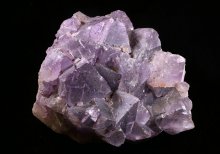Missing Pieces (299 million to 2.6 million years ago)
From 290 million to 2.6 million years ago, Illinois must have been a hotbed of geological, biological, and climatic change, but clues about what happened here during this long interval are mostly missing. The Age of Dinosaurs and most of the Age of Mammals came and went without leaving much trace in Illinois. Rocks were either not deposited, or they were eroded away. During this time, Illinois moved from its position just south of the equator to a position 2,800 miles north of the equator. The environment varied widely throughout this time interval, from tropical rain forests to dry deserts.
Well before Illinois became a state, Native American tribes (the Sac and Fox) living in the area mined galena ore (lead sulfide), the source of lead. Pioneer settlers also exploited the area’s lead resources, eventually displacing the Native Americans who first mined here. In the 1820s, galena ore became the focus of the first major “mineral rush” in the United States. By the end of the 1820s, the city of Galena rivaled Chicago in size.
Fluorite (fluorspar) mining got its start in Illinois in 1842. The mineral is usually referred to as fluorite, while the product that is mined is called fluorspar. It was used as a flux to help remove impurities while smelting metals like iron and aluminum. It also is used in products ranging from optical lenses to fluoride (derived from fluorite) in toothpaste. Fluorspar production peaked in the 1960s when an average of 118,820 tons was mined annually. Fluorspar mining eventually became unprofitable due to competition from overseas producers, coupled with the high costs of underground mining. The last mine in Illinois closed in 1995. Fluorspar is no longer mined in the United States.







